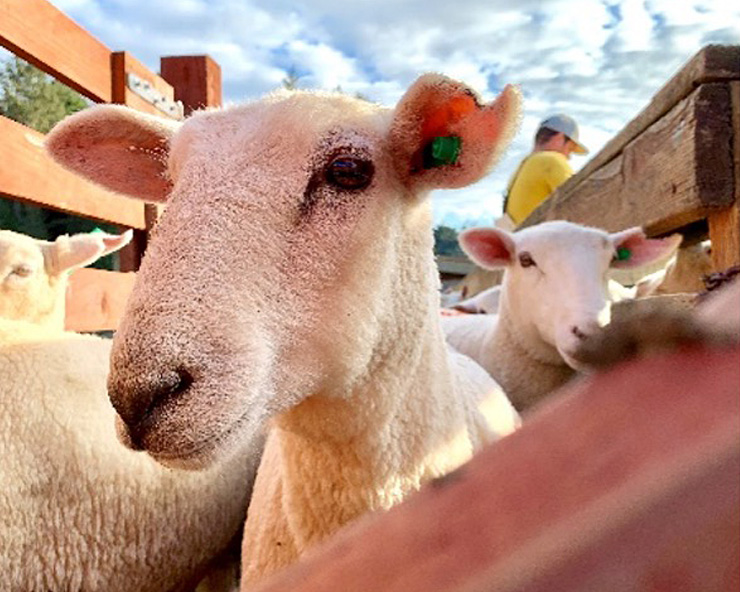Animal stress is different than human stress
We may experience stress from a lack of rain to grow our crops, tax season, or just having too much on our plate. Our animals experience stress quite differently. Small things, things we might not even notice, can cause our animals to stop eating. A sunny day in the winter where temps get up to 50°F when the average the week before was 15°F. Moving across the alley into a pen with different animals. Being transported on a trailer 10 miles down the road to another site or farm. These things can stress our animals, leading to a weakened immune system and decreased productivity.
Creating a low-stress environment
Minimize these stressors by taking a step back and picturing how your animals might see the situation, and acting from there to do what you can to correct the problem. Extreme temperatures, new housing, stressful handling, and transportation are common causes of stress in livestock and poultry. Adverse effects from stress include changes in the immune system and decreased feed intake, increasing the risk of disease on your farm. There are many ways to reduce stress in your animals. To reduce the stress caused by high heat, try offering extra water and shade, moving animals in the early morning to minimize heat stress, and ensuring good air movement for indoor raised animals. During extreme cold, water should be free of ice. Consider using water heating devices and make sure heaters work well and safely for indoor raised animals.
Low-stress handling
While we all want our animals to have the ability to express normal behaviors and freely wander through pastures, it’s often necessary for us at some point to restrain and examine or treat them.
Temple Grandin has been instrumental in forging new, lower-stress methods of handling animals and getting farmers to start looking at things through their animals’ eyes. Before animals even enter a working area, walk through the route yourself. Look for shadows, objects flapping in the wind, a sudden change in brightness, and slippery footing. These can cause animals to pause and want to turn in the opposite direction. Remove any unnecessary items place tin or plywood on gates to hide where people will be standing. Depending on the season and the sun’s direction, you may need to work your animals at a certain time of day for optimal light.
Once animals enter the facility, work them calmly and quietly, using the animals’ flight zones to get them to do what you want. Yelling and flapping your arms may get them to move faster, but the added stress could mean days until they regain their usual appetite. Slow and steady movements are always the best for working livestock. While dogs may seem to get the job done more efficiently, they can add undue stress to the animals in confined spaces. Take note of any places your animals seem to stall. Take note of any injuries that occur. Work to fix these issues before you work your animals again. Continually improving your space will lessen the animals’ stress and leave them a more positive memory of the event.
Maintain this mindset on and off your farm
If animals are being loaded into a trailer to be moved, make sure the drivers take precautions to reduce stress while on the road. Avoid fast starts, stops or turns – it can be the difference between all animals arriving safely and one needing humane euthanasia due to a broken leg. If you raise market animals, try finding a processing facility that has been certified with low-stress handling.
Need more information?
We have just begun to scratch the surface of techniques to reduce stress in your animals. To delve deeper, feel free to use the resources below for more information. Don’t be afraid to reach out to your local extension agent or veterinarian for specific information on local seminars or meetings.
- Low-Stress Cattle Handling Presentation. Temple Grandin
- Temple’s Top Animal Handling Tips. Beef Magazine
- Low Stress Cattle Handling, Canadian Center for Health & Safety in Agriculture
- Livestock Behavior, Design of Facilities & Humane Slaughter, Temple Grandin
- Understanding Flight Zone and Point of Balance for Low Stress Handling of Cattle, Sheep & Pigs, The Natural Farmer
- Field Guide Handbook, Beef Quality, and Assurance

